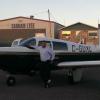Glide slope not coming in
-
Members Online
- Paul Thomas
- Rohan Whittington
- BrianWilkins
- 47U
- Flash
- PT20J
- Glen S.
- 7.Mooney.Driver.0
- Buckeyechuck
- JoeM
- Fly Boomer
- 201Steve
- Jesse20
- TCC
- Aaviationist
- 201guy
- Guy123
- GeeBee
- PeteMc
- teethdoc
- skydvrboy
- Oliver
- FoxMike
- redbaron1982
- NickG
- IvanP
- Zulee
- N201MKTurbo
- Gilt
- exM20K
- LOCOLJ
- N305EP
- EricJ
- spaceman39a
- PilotX
- ArtVandelay
- Ragsf15e
- affricate
- laytonl
- Kevin Yeo


Recommended Posts
Join the conversation
You can post now and register later. If you have an account, sign in now to post with your account.